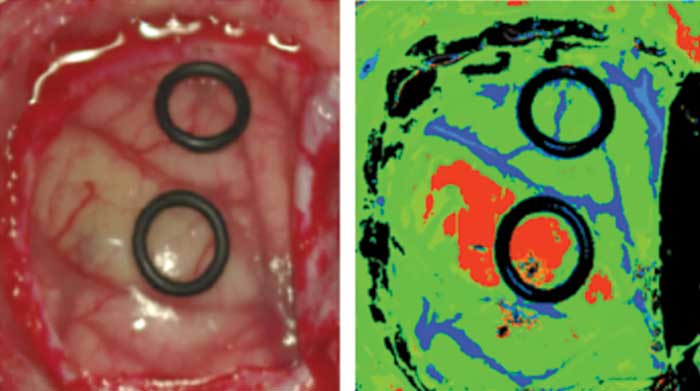Small, robust and with low power requirements, optical sensors are increasingly being incorporated into wearable, on-body devices.
 As sensors shrink in size, they are able to reach places that were previously inaccessible — such as inside the human body. What is more, incorporating such increasingly tiny sensors within a medical device means there is more space left for added functionality. Medical devices of the future will not only have the capacity to sense but will also perform meaningful analysis and diagnostics.
An aging and expanding population is accelerating the development of new and different types of medical equipment, including various sensors used inside both equipment and patients’ bodies.
According to a 2017 market report1 by market research and strategic consulting company Yole Développement of Lyon, France, the medical industry has a growing interest in solid-state technologies in order to answer the challenges of miniaturization, patient safety, early diagnostics, low power consumption and cost-savings.
“Three hundred fifty million dollars of solid-state optical sensor devices for medical imaging applications has been sold in 2016,” said Benjamin Roussel, business unit manager of Yole’s MedTech activity. Yole expects a growth of 8.3 percent in the next five years, he said.
Today’s optical sensors measure a variety of biometrics, including heart rate and blood oxygen concentration and perfusion. Each of these measurements involves illuminating a light source at a specific wavelength into the body through the skin. This light scatters and modulates based on the properties and characteristics of the target tissue through which it travels.
For example, light illuminated across a finger will scatter and be absorbed due to the blood flowing through that area. If one can detect the parameters of the propagating light, a waveform — called a photoplethysmogram (PPG) — can be constructed, which correlates strongly with a subject’s heart rate.
As sensors shrink in size, they are able to reach places that were previously inaccessible — such as inside the human body. What is more, incorporating such increasingly tiny sensors within a medical device means there is more space left for added functionality. Medical devices of the future will not only have the capacity to sense but will also perform meaningful analysis and diagnostics.
An aging and expanding population is accelerating the development of new and different types of medical equipment, including various sensors used inside both equipment and patients’ bodies.
According to a 2017 market report1 by market research and strategic consulting company Yole Développement of Lyon, France, the medical industry has a growing interest in solid-state technologies in order to answer the challenges of miniaturization, patient safety, early diagnostics, low power consumption and cost-savings.
“Three hundred fifty million dollars of solid-state optical sensor devices for medical imaging applications has been sold in 2016,” said Benjamin Roussel, business unit manager of Yole’s MedTech activity. Yole expects a growth of 8.3 percent in the next five years, he said.
Today’s optical sensors measure a variety of biometrics, including heart rate and blood oxygen concentration and perfusion. Each of these measurements involves illuminating a light source at a specific wavelength into the body through the skin. This light scatters and modulates based on the properties and characteristics of the target tissue through which it travels.
For example, light illuminated across a finger will scatter and be absorbed due to the blood flowing through that area. If one can detect the parameters of the propagating light, a waveform — called a photoplethysmogram (PPG) — can be constructed, which correlates strongly with a subject’s heart rate.
Member Exclusive: To read the complete article, please Login or Register